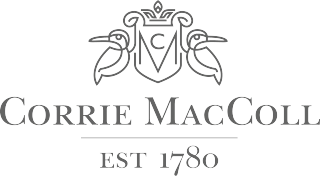How to Optimize Your Manufacturing Process with Molding Rubber
In the competitive landscape of manufacturing, optimizing processes is essential for maintaining efficiency and quality. One key area that manufacturers can focus on is the use of Molding Rubber, a versatile material that offers numerous advantages in production. Molding Rubber not only enhances the durability and performance of products but also allows for greater design flexibility, leading to innovative shapes and functionalities that can meet diverse market demands.

By understanding the different types of Molding Rubber available and their specific applications, manufacturers can strategically implement these materials to streamline their processes, reduce costs, and improve overall product quality. This blog will explore the various aspects of Molding Rubber, providing insights into how to effectively leverage it to achieve maximum optimization in your manufacturing workflow.
Understanding the Basics of Molding Rubber in Manufacturing Processes
Molding rubber is a versatile technique commonly utilized in manufacturing processes to create a wide array of products, ranging from automotive components to household items. At its core, molding rubber involves the use of heat and pressure to shape elastomers into specific forms. Understanding the basic principles of this method can significantly enhance production efficiency and product quality.
One of the fundamental aspects of molding rubber is the selection of the appropriate type of rubber material. Different formulations can offer various properties, such as flexibility, durability, and resistance to chemicals or temperature extremes. For manufacturers, choosing the right material is crucial as it directly impacts the end product's performance. Additionally, the molding process itself can vary, with options including compression molding, transfer molding, and injection molding; each method has its advantages based on production volume and part complexity.
Optimizing the molding process also requires a keen focus on tooling and machine setup. Ensuring that molds are designed with precision and that machinery is calibrated effectively reduces waste and enhances cycle times. By understanding these basics of molding rubber, manufacturers can streamline their processes, minimize errors, and ultimately deliver superior products to the market.
Optimization of Manufacturing Processes with Molding Rubber
Identifying Key Benefits of Optimizing Rubber Molding Techniques
Optimizing rubber molding techniques can significantly enhance the efficiency and quality of manufacturing processes. By identifying and implementing best practices, businesses can reduce waste and improve production speed. One of the key benefits of optimizing these techniques is the reduction of cycle times. Streamlining processes like material preparation, mold design, and curing can lead to faster turnaround times, allowing manufacturers to meet growing demand without sacrificing quality.
Another critical advantage of refining rubber molding practices is the enhancement of product consistency. By utilizing advanced technology and precise control over the molding parameters, manufacturers can produce parts with uniform properties and dimensions. This reliability not only results in lower rejection rates but also bolsters customer satisfaction, as clients receive high-quality products that meet their specifications. Moreover, adjusting the formulation and processing conditions can lead to improved mechanical properties of the final products, which is essential for industries relying on durable and resilient components.
Step-by-Step Guide to Selecting the Right Rubber Materials
When it comes to molding rubber for manufacturing processes, the selection of the right rubber materials is crucial to achieving optimal results. Different applications require different types of rubber, making it essential to understand the properties of each material. For example, natural rubber offers excellent elasticity and resilience, making it ideal for products that require high flexibility. On the other hand, synthetic rubbers like neoprene and silicone can withstand harsher environmental conditions, making them suitable for applications where durability and temperature resistance are paramount.

To select the right rubber materials effectively, begin by assessing the specific requirements of your manufacturing processes. Consider factors such as the operating environment, the mechanical stresses the product will encounter, and any regulatory standards that must be met. It’s also important to evaluate the rubber’s hardness, temperature stability, and resistance to chemicals, as these properties will influence the performance and longevity of the final product. Consulting with rubber suppliers and conducting material tests can further aid in making an informed decision, ultimately enhancing the efficiency and quality of your manufacturing output.
Best Practices for Streamlining Molding Equipment and Workflow
When it comes to optimizing your manufacturing process, focusing on molding equipment and workflow is paramount. Streamlined design can significantly enhance efficiency, especially in processes requiring precise measurements and consistent output, such as melt flow testing. Implementing user-friendly features, such as selectable weights on equipment, allows operators to adjust parameters quickly, thereby minimizing downtime and maximizing productivity.
Incorporating best practices into your molding workflow can also contribute to seamless operations. By standardizing procedures and employing advanced technologies, manufacturers can reduce variability and improve product quality. Regular maintenance of machinery ensures that equipment operates at peak performance, further streamlining processes. Additionally, fostering a culture of continuous improvement encourages teams to identify bottlenecks and implement innovative solutions, ultimately leading to enhanced efficiency in your molding operations.
How to Optimize Your Manufacturing Process with Molding Rubber - Best Practices for Streamlining Molding Equipment and Workflow
| Molding Process Stage | Best Practices | Key Benefits | Frequency of Review |
|---|---|---|---|
| Material Selection | Choose high-quality, appropriate rubber materials. | Improved product durability and performance. | Quarterly |
| Machine Calibration | Regularly calibrate molding machines for precision. | Reduced defects and waste. | Monthly |
| Workflow Organization | Create a clear layout and process flow. | Increased efficiency and reduced cycle time. | Biannually |
| Employee Training | Invest in regular training for operators. | Higher quality output and safe operation. | Annually |
| Maintenance Procedures | Implement a preventive maintenance schedule. | Increased machine uptime and reliability. | Monthly |
Common Challenges in Rubber Molding and How to Overcome Them
Rubber molding is a vital manufacturing process, yet it comes with its set of challenges that can hinder efficiency and product quality. One common issue is inconsistent material flow during the molding process. This can lead to variations in product dimensions and features. To combat this, it’s essential to ensure that the rubber compounds are properly mixed and that the mold design allows for uniform material distribution. Implementing advanced simulation software can also help visualize and optimize material flow before actual production, minimizing missteps and wasted resources.
Another significant challenge is the quality control of the final products. Defects such as air bubbles or incomplete fills can arise, impacting performance and reliability. To address this, manufacturers should adopt rigorous testing protocols including pressure tests and visual inspections during the production cycle. Additionally, setting up a feedback loop where operators can report defects in real time enables quicker adjustments to processes and helps in the continuous improvement of product quality. By facing these challenges head-on with well-structured strategies, manufacturers can enhance the efficiency and reliability of their rubber molding processes.

Related Posts
-

Innovative Solutions for Molding Rubber Applications in Global Manufacturing
-

Global Leaders in Best Rubber Processing Proudly Manufacturing in China for the World
-

Ultimate Guide to Sourcing High-Quality TPR Rubber Suppliers: Essential Checklist for Global Buyers
-

How to Optimize the Use of Normal Butyl Rubber for Enhanced Industrial Performance
-

Mastering Ultrasonic Welding Rubber: A Step-by-Step Guide for Beginners
-

Top 10 Thermoplastic Rubber Manufacturers from China at the 137th Canton Fair

